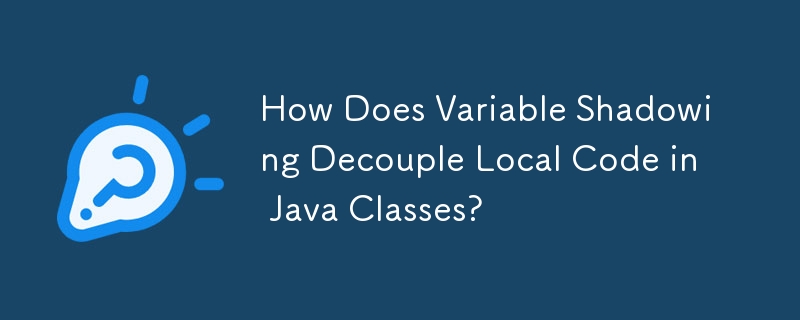

When exploring the concept of variable shadowing in a Java class, it's important to question its purpose and understanding its implications. Shadowing allows the use of a local variable with the same name as a non-local variable. Such a scenario may arise when a subclass inherits variables from its parent class.
Consider the following example:
1 2 3 4 5 6 7 8 9 10 11 12 13 |
|
In this example, the shadowing of the class variable x within the useLocal method is a necessary step. Without it, the method would attempt to access the class variable, which is private to the containing class and therefore inaccessible from within the subclass.
It's important to note that shadowing should only be used in situations where you truly intend to create a new variable that is independent of the non-local variable it overshadows. Intending to share data under the shadowing variable is incorrect and can potentially cause unexpected runtime behavior.
The above is the detailed content of How Does Variable Shadowing Decouple Local Code in Java Classes?. For more information, please follow other related articles on the PHP Chinese website!




